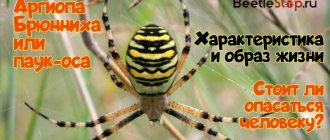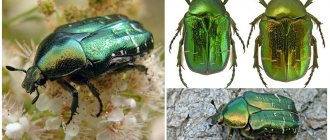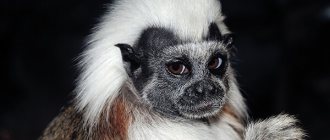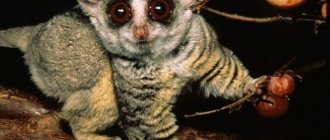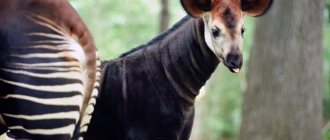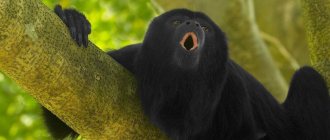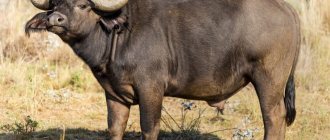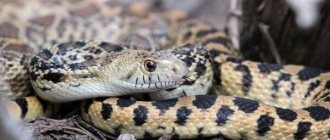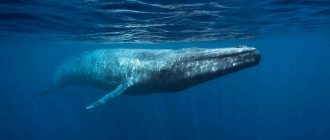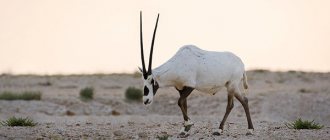The lion tamarin is one of the smallest species of monkey. These small monkeys live in Latin America.
Their habitat is the upper tiers of rain forests. The species is in danger of extinction.
Lion tamarins have golden fur, so its shine is compared to the “shine of gold dust.” To keep their fur coat in order, monkeys brush it regularly.
Lion tamarins often give birth to twins. All family members take care of the babies.
Lion tamarin (Leontopithecus rosalia).
Reasons for the extinction of lion tamarins
One of the main reasons for the decline in lion tamarin populations is habitat loss. These monkeys live near Rio de Janeiro, in the rain forests, which people are cutting down at a rapid pace and making agricultural land in their place.
There are fewer and fewer lion tamarins in the wild.
Lion tamarins often die during forest fires because they live on the tops of trees, and during a fire this part of the forest burns first.
The population is also declining due to the illegal trade of these monkeys. Since 1960, the export of lion tamarins has been prohibited by law. But illegal immigrants still sell them to this day, since there is a huge demand for these monkeys, many people want to keep them as pets.
Family of golden marmosets.
Appearance and morphological features
The golden lion tamarin is the largest representative of the marmoset family: body length is 20-25 cm, weight on average is 620 grams. It has a long tail (32-37 cm), covered with smooth hair. The hair on the body and limbs is much shorter than near the head. Here it forms a kind of mane, for which, apparently, the animal got its name. Females and males do not differ in size, and both sexes have a “mane.” There are almost no six on the face, only a small amount is on the forehead and chin. There is no hair on the palms and feet. The complexion varies from violet-flesh to light brown. The face has large brown eyes, clearly visible nostrils and a large mouth. Like other species of tamarins, the fingers have claws rather than nails.
Nutrition and feeding behavior
Golden tamarins are omnivores, their diet is very varied. They eat fruits, flowers, bird eggs, insects and even small vertebrates. They love to feast on the nectar of flowers. Gum, the frozen sap of trees, plays a significant role in nutrition.
Tamarins begin their mornings with searching for and eating fruits. During lunch hours, animals hunt more for insects and other living creatures. Insects make up about 15% of their diet. Tamarins often look for them under the bark of trees, in the axils of the leaves of bromeliad plants, or among the interweaving of vines. They extract prey with their long, mobile fingers. This behavior is called micromanipulation.
During the wet season, tamarins eat a lot of fruit; during the dry season, a significant part of the diet can be nectar and gum.
There are several feeding places in the habitat of each tamarin family, and the animals use the area unevenly. Research has shown that animals spend 50% of their time on only 11% of their territory.
Lifestyle and social behavior
Tamarins are diurnal animals. Their activity begins at dawn and ends at dusk, interrupted during the day by small “siestas.” Maximum activity time is 12 hours a day. For sleep, the animals use various shelters - tree hollows, crevices on cliffs or intertwining vines located at an altitude of 11-15 meters. They prefer to sleep cuddled up to each other. Tamarins change their shelters daily so as not to attract the attention of predators.
Golden tamarins live in groups consisting of a breeding pair of adults and their children of different ages. Sometimes a group consists of 2-3 males and one female, or 2-3 females and 1 male. When there is more than one adult animal in a group, hierarchical relationships are established between them, which are maintained by agonistic interactions. The dominant status of an animal depends on its lifespan in the group. New immigrants occupy a subordinate position. Both males and females can leave the family where they were born at the age of 4 years, but females can remain in groups, replacing deceased mothers. This, in turn, can serve as an impetus for the male – the father of this female – to leave the group in order to avoid inbreeding. This does not happen with young males and their fathers. Males that leave the parental group can unite with other similar males and join a new group. And the majority of “invaders” into groups are males. Sometimes a young male has the opportunity to join a group where the head of the family has died or left it. It happens that two brothers expel an adult male from a neighboring group. In this case, only one of the brothers will reproduce and at the same time suppress the other.
Smells play a big role in the life of tamarins. Breeding males and females leave many more scent marks than other members of the group. In this way, they, in particular, maintain their dominant status.
Tamarins stay in “their” specific territory and protect it from other representatives of their species. Territoriality is maintained by scent marking and vocalizations. In this case, border areas can be used by neighboring groups, but at different times.
Vocalization
Golden tamarins, like other members of their genus, have complex and differentiated vocalizations. They warn each other of danger with a howling or whining sound, communicate with each other close by squeaking, and use clicks during aggressive interactions. Gnashing or squealing usually accompanies play behavior, and the animals communicate with trills over long distances.
Reproduction and parental behavior
Golden tamarins are strict monogamists. If there are two males in the group, then only one breeds. There are groups in which there are two adult females, usually a mother and daughter. However, only one of them is dominant, and it suppresses the reproduction of the other (or others, if there are growing females in the group). Reproduction is confined to the rainy seasons. Mating occurs from late March to mid-June, pregnancy lasts four months, and babies are born from September to February.
Usually twins are born, occasionally triplets and very rarely four cubs. Newborns are covered with short fur and their eyes are open. The cubs are raised together. The older children of a breeding couple cannot yet have their own offspring, but by caring for their younger brothers and sisters, they acquire the necessary skills of parental behavior. For the first four weeks of life, babies are completely dependent on their mother to feed and clean them. Other members of the group also take part in caring for the babies, but the father is the most important. Gradually, the cubs begin to master the environment and communicate more and more with relatives. At the age of three months they stop drinking milk, at the age of 17 months they begin to show elements of adult behavior, and they become adults by 2-2.5 years, females are slightly earlier than males.
Lifespan
The first year of life is the most difficult for young tamarins. During this period, up to 50% of animals die. The rest, as a rule, become adults and live up to 8 years in the wild. In zoos and nurseries, animals live much longer - up to 12 and even 15 years.
The Story of Life at the Zoo
Golden tamarins first appeared in our zoo in mid-October 2022. Negotiations to obtain these beautiful primates lasted more than a year. As a result, on the recommendation of the coordinator of the European program for this species, colleagues from the Münster Zoo (Germany) gave us two five-year-old females. We hope to bring a male in the near future to form a pair with one of them.
Charming golden animals can be seen in the left wing of the Monkeys pavilion. Monkeys are very active and spend a lot of time playing. However, if they are sitting still, you need to look closely to notice them. The greatest activity of these animals is observed in the morning; towards evening they often doze off.
At the zoo, these monkeys receive a variety of fruits, baby cereal, chicken, eggs, cottage cheese, live insects, and gum (resin from tropical fruit trees). Insects (crickets, cockroaches, locusts) are allowed into the enclosure, and the tamarins catch and eat them, this is similar to foraging in nature.
How can you help lion tamarins?
If you want to help these monkeys, you can become a member of a conservation organization. Today there are special branches of the International League for the Protection of Primates that are involved in the protection of all species of monkeys. Members of this organization receive 3 magazines every year with the latest information about the life and conservation of primates around the world.
Lion tamarins are disappearing due to habitat loss.
To prevent the population from declining to a critical level, it is necessary to save the forest. It is impossible for one person to save the world's forests, but everyone can make a small contribution. For example, do not buy products made from South American wood. You can use recycled paper.
This species is threatened with complete extinction.
Particular attention should be paid to the fight against animal trafficking. Everyone loves animals, but not every animal can be kept at home. It is worth having cats and dogs as pets. And if you find out about the sale of exotic animals and monkeys, you need to contact the Animal Welfare Society.
If you find an error, please select a piece of text and press Ctrl+Enter.
Links[edit]
- Jump up
↑ Groves, C. P. (2005). "Order of Primates". In Wilson, D. E.; Reeder, D. M. (ed.). Mammal Species of the World: A Taxonomic and Geographical Guide (3rd ed.). Johns Hopkins University Press. item 133. ISBN. 978-0-8018-8221-0. OCLC 62265494. - Rylands AB, Mittermeier RA (2009). "Diversity of New World primates (Platyrrhini)". In Garber PA, Estrada A, Bicca-Marquez JC, Heymann EV, Strier KB (eds). South American Primates: Comparative Perspectives in the Study of Behavior, Ecology, and Conservation
. Springer. pp. 23–54. ISBN 978-0-387-78704-6. - Kierulff, M. C. M.; Rylands, AB; Mendez, S.L. and de Oliveira, M.M. (2008). "Leontopithecus chrysomelas" IUCN Red List of Threatened Species
.
IUCN. 2008
: e.T40643A10347712. DOI: 10.2305/IUCN.UK.2008.RLTS.T40643A10347712.en. Retrieved January 12, 2018. - Baker AJ, Bales K, Dietz JM. (2002). Mating system and group dynamics of lion tamarins. In: Kleiman DG, Rylands AB, editors. Lion tamarins: biology and conservation.
Washington, DC: Smithsonian Institution Press. pp. 188-212. - ^ a b Kleiman D. G., Geist G. (2003). Golden-headed lion Tamarina. Grzimek's Encyclopedia of Animal Life.
2nd ed. 14th volume - ^ abc Lundrigan, B. and K. Kapheim. (2000). Leontopithecus chrysomelas
(online), Animal Diversity Internet. https://animaldiversity.ummz.umich.edu/site/accounts/information/Leontopithecus_chrysomelas.html . - ^ a b Rothe H, Darms K. (1993). Social organization of marmosets: a critical assessment of recent concepts. In: Rylands AB, editor. Monkeys and tamarins.
Systematics, behavior and ecology. Oxford: Oxford University Press. pp. 176-199. - ^ab French JA. (1997). Approximate regulation of single callitrichid reproduction. In: Solomon N.G., French J.A., editors. Cooperative breeding of mammals.
Cambridge: Cambridge University Press. pp. 34-75. - ^ ab Raboy BE, Dietz JM. (2004). Diet, foraging, and space use in wild golden-headed lion tamarins. American Journal of Primatology
63: 1-15. - Rylands AB. (1993). Ecology of lion tamarins, Leontopithecus: some intrageneric differences and comparisons with other callitrichids. In: Rylands AB, editor. Monkeys and tamarins: taxonomy, behavior, ecology.
Oxford: Oxford University Press. pp. 296-313. - Jump up
↑ Ruiz-Miranda CR, Archer CA, Kleiman DG.
(2002). Acoustic differences between spontaneous and induced long calls of golden lion tamarins, Leontopithecus rosalia
.
Folia Primatol
73:124–131. - Rylands AB. (1989). Sympatric Brazilian callitrichids: black crested monkey Callithrix kuhli
and golden-headed lion tamarin
Leontopithecus chrysomelas
.
J.Hum.
Evol. 18: 679-695. - Rylands AB. (1982). Ecology and behavior of three species of marmosets and tamarins (Callitrichidae, Primates) in Brazil. PhD. dissertation, University of Cambridge, Cambridge, UK.
- Rylands AB. (1996). Habitat and evolution of social and reproductive behavior in Callitrichidae. I am.
J Primatol. 38:5-18. - Dietz JM, Perez CA, Pinder L (1997). Foraging ecology and space use in wild golden lion tamarins ( Leontopithecus rosalia
). Am J Primatol 41:289–305. - Perez CA. (1989). Costs and benefits of territorial defense in wild golden lion tamarins, Leontopithecus rosalia
.
Behav.
Ecol. Sociobiol. 25: 227-233. - Perez CA. (2000). Territorial defense and the ecology of group movements in small neotropical primates. In: Boinski S, Garber PA, editors. On the move: how and why animals travel in groups.
Chicago: University of Chicago Press. pp. 100-123. - ^ ab Costa LP, Leite YLR, Mendes SL, Ditchfield AD. (2004). Mammal conservation in Brazil. Conservation Biology
19 (3) 672-679. - ^ B s d e e Kleiman D.G., Mallinson JC. (1998). Lion Tamarin Recovery and Management Committees: Partnerships in conservation planning and implementation. Society for Conservation Biology
12 (1) 27-38. - ^ abc Cawthon Lang KA. (July 20, 2005). Primate Fact Sheets: Golden-headed Lion Tamarin ( Leontopithecus chrysomelas
) Taxonomy, Morphology and Ecology. https://pin.primate.wisc.edu/factsheets/entry/golden-headed_lion_tamarin. - Raboy BE, Christman MC, Dietz, JM. (2004). Use of degraded and shaded cocoa forests by endangered golden-headed lion tamarins Leontopithecus chrysomelas
.
Oryx
38 (1) 75-83. - Jump up
↑ Stallings, JR & Robinson, JG.
(1991). Disturbance, forest heterogeneity and primate communities in the Brazilian Atlantic Forest Park. Primatology Brazil
3: 357-368.
Habitat and distribution[edit]
The golden lion tamarin has a very limited distribution range as they have lost almost 2–5% of their original habitat in Brazil over time. [12] Today, this Tamarin is limited to three small areas of tropical forest in southeastern Brazil: Poço Das Antas Biological Reserve, Hacienda Uniao Biological Reserve, private ownership of the land through a reintroduction program. [6] The first population estimate, made in 1972, estimated the number to be between 400 and 500. By 1981, the population had dropped to less than 200. Research dating back to 1995 suggested that there may have been no more than 400 golden lion tamarins left in the wild . ; since then the wild population has increased to 3,200 individuals. Tamarins live along the far southeastern border of the country in the municipalities of Silva Jardim, Cabo Frio, Saquarema and Araruama. [13] However, they were successfully reintroduced in the municipalities of Rio das Ostras, Rio Bonito and Casimiro de Abreu. [14]Tamarins live in coastal lowland forests less than 300 m (984 ft) above sea level. [15] They can be found in hilltop forests and swamps.
Content
- 1 Physical characteristics
- 2 Habitat and distribution
- 3 Behavior and ecology 3.1 Social structure
- 3.2 Playback
- 3.3 Ecosystem roles
- 3.4 Predation
- 4.1 Re-introduction
